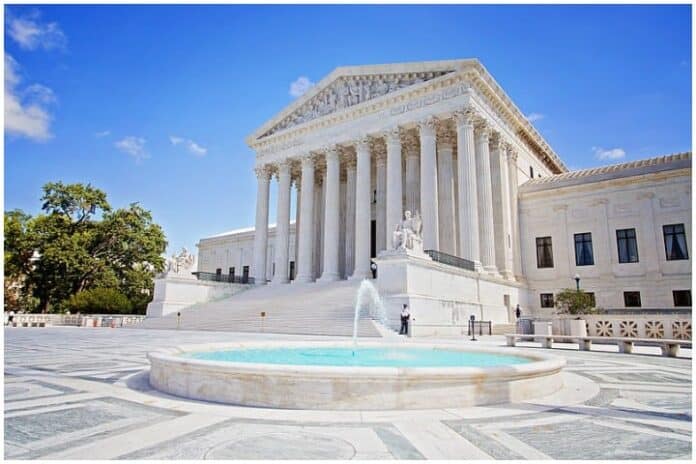US Supreme Court Justice Ruth Bader Ginsburg died from complications with metastatic pancreatic cancer at the age of 87 after serving 27 years on the bench. Supreme Court nominations are decided by the U.S. Senate.
The vacancy resulting from Ginsburg’s death now gives President Trump the ability to increase the conservative majority on the Supreme Court. But the election is looming. Many are wondering: What are the steps for Supreme Court nominations? Does Trump have time to nominate, say, Amy Coney Barrett or another candidate?
It appears he does. Senate Majority Leader Mitch McConnell said after Ginsburg’s death that a Trump nominee will get a vote in the Senate before the election.
According to GeorgeTown Law:
The Process
- The President usually will consult with Senators before announcing a nomination.
- When the President nominates a candidate, the nomination is sent to the Senate Judiciary Committee for consideration.
- The Senate Judiciary Committee holds a hearing on the nominee. The Committee usually takes a month to collect and receive all necessary records, from the FBI and other sources, about the nominee and for the nominee to be prepared for the hearings.
- During the hearings, witnesses, both supporting and opposing the nomination, present their views. Senators question the nominee on his or her qualifications, judgment, and philosophy.
- The Judiciary Committee then votes on the nomination and sends its recommendation (that it be confirmed, that it be rejected, or with no recommendation) to the full Senate.
- The full Senate debates the nomination.
- The Senate rules used to allow unlimited debate (a practice known as filibustering) and to end the debate, it required the votes of 3/5 of the Senate or 60 senators (known as the cloture vote). In April 2017, the Senate changed this rule and lowered the required votes to 51 to end debate on Supreme Court nominations (this is commonly known as “the nuclear option”).
- When the debate ends, the Senate votes on the nomination. A simple majority of the Senators present and voting is required for the judicial nominee to be confirmed. If there is a tie, the Vice President who also presides over the Senate casts the deciding vote.
According to MSNBC, in the days leading up to her death, Ginsburg dictated this statement to her granddaughter: “My most fervent wish is that I will not be replaced until a new president is installed.”
Table of Contents





















![WATCH: Elon Musk Town Hall Rally in Green Bay [FULL Video]](https://www.wisconsinrightnow.com/wp-content/uploads/2022/04/Elon_Musk_3018710552-356x220.jpg)











